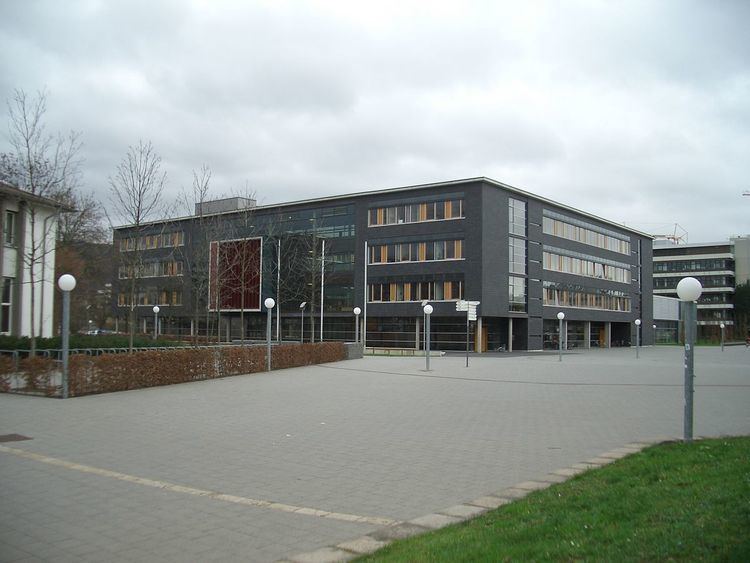 | ||
The Faculty of Physics and Astronomy is one of twelve faculties at the University of Heidelberg. It comprises the Kirchhoff Institute of Physics, the Institute of Physics, Theoretical Physics, Environmental Physics and Theoretical Astrophysics.
Contents
Kirchhoff Institute of Physics
The Kirchhoff-Institut für Physik (Kirchhoff Institute of Physics), built in 2002, is a research institute located in Heidelberg, Germany. It shares faculty with the physics and astronomy departments at the University of Heidelberg. The institute is named after Gustav Kirchhoff, who collaborated in Heidelberg in 1854 with Robert Bunsen in spectroscopic work.
The scope of its research is broad. Many projects exist, from low temperature physics and neuronal information processing to surface physics.
Facilities include (apart from several laboratories) a cleanroom, an ASIC laboratory, an experimental hall and, as it is also serves undergraduates, there are 2 auditoriums with a capacity of over 300 people, several seminar rooms and a CIP pool. Current director is Prof. Dr. Markus Oberthaler.
Research Interests
Institute of Environmental Physics
The Institute of Environmental Physics was founded in 1975. Its current director is Prof. Dr. Norbert Frank.
Research Interests
Center for Astronomy
The Zentrum für Astronomie der Universität Heidelberg (Center for Astronomy of Heidelberg University) was founded in 2005 and is an association of three research institutes: the Astronomical Calculation Institute, the Institute of Theoretical Astrophysics and the Landessternwarte Heidelberg-Königstuhl (the Heidelberg-Königstuhl State Observatory).
Astronomical Calculations Institute
The Astromomisches Rechen-Institut (Astronomical Calculation Institute) is part of the Center of Astronomy of the University of Heidelberg. Before it was a research institute for astrometry and stellar dynamics belonging to the state of Baden-Württemberg.
It is the most important international institution for astronomical data calculations. The Astronomisches Rechen-Institut is responsible among other things for the Gliese catalog of nearby stars, the fundamental catalog FK5 and FK6 and the annual published Apparent places, a high precision catalog with pre-calculated positions for over 3 thousand stars for each day.
The ARI was founded in 1700 in Berlin-Dahlem by Gottfried Kirch. It has its origin from the catalog patent application in this time by Frederick I of Prussia, who introduced a monopoly on publishing star catalogs in Prussia. In 1945 the Institute was moved by the occupying force (Americans) nearer to their headquarters in Heidelberg. Since January 1, 2005 it has been integrated into the Center of Astronomy and as of today is not limited to publishing star catalogs but has a wide research scope.
Institute of Theoretical Astrophysics
The Institute of Theoretical Astrophysics was founded in 1976.
Research Interest
